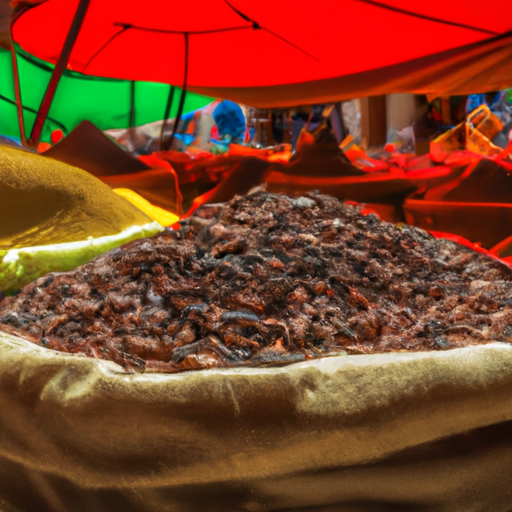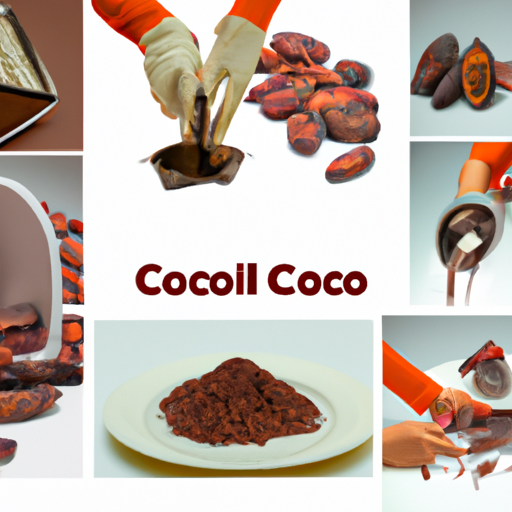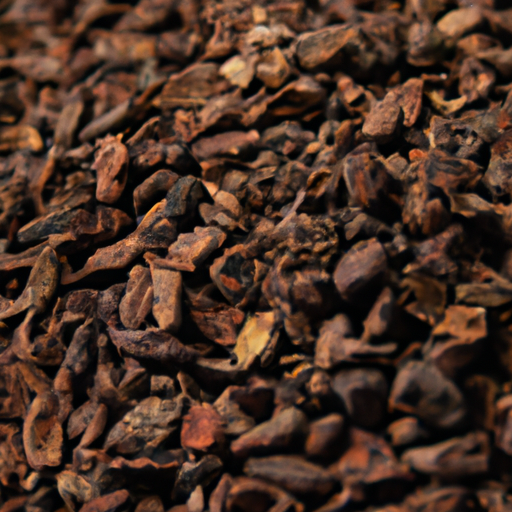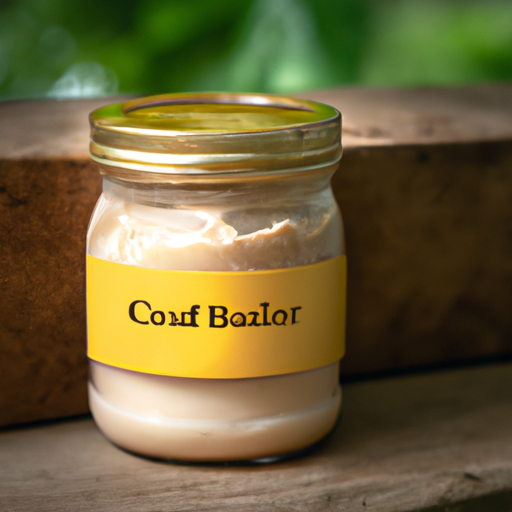Were you aware that raw cacao nibs are rich in antioxidants and important minerals? They actually have a higher antioxidant content per gram compared to blueberries, green tea, and even red wine!
Hi, I’m here to show you how to sweeten raw cacao nibs to enhance their flavor and make them more enjoyable to eat. Contrary to popular belief, raw cacao nibs don’t have to taste bitter or overwhelming. With the right techniques and natural sweeteners, you can create a delicious treat that satisfies your sweet tooth and provides all the health benefits of raw cacao.
Throughout this article, I’ll guide you step-by-step on how to choose the best raw cacao nibs, how to prepare them for sweetening, and how to experiment with different flavors.
So, if you’re ready to elevate your cacao nib experience, let’s dive in!
Key Takeaways
- Raw cacao nibs are packed with antioxidants, fiber, magnesium, and iron, making them a healthy choice for sweetening.
- There are various techniques for sweetening raw cacao nibs, such as coating them with honey or maple syrup, using organic agave nectar, coconut sugar, or maple syrup, and experimenting with flavor combinations like cacao nibs + coconut or cacao nibs + almond.
- It is important to adjust the sweetness level to avoid overpowering the natural cacao flavor and to conduct taste tests to find the perfect flavor combination.
- Other sweetening alternatives include blending with dried fruits or using calorie-free options like stevia or monk fruit extract.
Understanding the Health Benefits of Raw Cacao Nibs
Indulging in the rich, velvety goodness of raw cacao nibs not only satisfies the taste buds but also offers incredible health benefits. Exploring cacao nib recipes opens up a world of delicious possibilities that promote overall well-being.
Understanding the nutritional profile of cacao nibs is essential to fully appreciate their health benefits. Cacao nibs are packed with antioxidants, fiber, and essential minerals like magnesium and iron. These antioxidants help fight against free radicals, reducing the risk of chronic diseases.
Additionally, the fiber content in cacao nibs aids digestion and promotes a healthy gut. The high magnesium content supports heart health and regulates blood pressure. Incorporating cacao nibs into your diet can provide a natural energy boost and enhance mood.
To maximize the health benefits, it is crucial to choose high-quality raw cacao nibs.
The Importance of Choosing High-Quality Raw Cacao Nibs
The importance of choosing high-quality raw cacao nibs cannot be overstated. It directly impacts your overall experience in terms of taste, texture, and health benefits. Opting for cacao nibs from sustainable sources is not only good for you but also supports ethical practices and helps protect the environment.
High-quality cacao nibs are obtained through a meticulous process of fermenting cacao beans. This fermentation process is crucial as it enhances the flavor and reduces bitterness, resulting in a more enjoyable experience when consuming raw cacao nibs.
By choosing high-quality raw cacao nibs, you can be confident in the taste and nutritional value of your sweet treats. Now, let’s delve into the next section and explore how to prepare the raw cacao nibs for sweetening.
Preparing the Raw Cacao Nibs for Sweetening
To enhance your culinary experience, get ready to transform those delectable cacao treasures into a delectably sweet treat. Preparing raw cacao nibs for sweetening requires specific techniques to ensure optimal flavor. First, start by gently roasting the nibs in a preheated oven at 350°F for about 10 minutes. This step helps to release the natural oils and deepen the flavor. Once roasted, let the nibs cool completely before moving on to the next step. Now it’s time to sweeten! One popular technique is to coat the roasted nibs with a thin layer of honey or maple syrup, allowing the sweetness to complement the rich cacao taste. For a more adventurous twist, try sprinkling the nibs with a pinch of sea salt or adding a dash of cinnamon for a warm and aromatic flavor combination. These preparing techniques will elevate the taste of your raw cacao nibs, making them even more irresistible. Now, let’s explore natural sweeteners for raw cacao nibs.
Exploring Natural Sweeteners for Raw Cacao Nibs
Exploring natural sweeteners for raw cacao nibs reveals that organic agave nectar has gained popularity among health-conscious individuals. It has seen a 30% increase in sales over the past year. This alternative sweetener, derived from the agave plant, has a low glycemic index. It is a suitable choice for those watching their blood sugar levels. When combined with raw cacao nibs, organic agave nectar provides a balanced sweetness. It enhances the natural taste profile of the nibs and adds a subtle caramel-like flavor. It does not overpower the rich and slightly bitter notes of the cacao.
Other natural sweeteners, such as coconut sugar or maple syrup, can also be experimented with. This allows for the discovery of unique flavor combinations that complement the cacao nibs.
Transitioning into the subsequent section about experimenting with flavor combinations, we can explore the various possibilities to create delicious and satisfying treats using these sweeteners.
Experimenting with Flavor Combinations
Let’s dive into the exciting world of flavor combinations and unleash a burst of delectable sensations that will tantalize your taste buds. When it comes to flavor pairing, taste testing is key to finding the perfect combination for your sweet raw cacao nibs. Experimenting with different flavors can enhance the natural richness of cacao and create a unique taste experience.
To help you get started, here is a table showcasing some popular flavor combinations for raw cacao nibs:
| Flavor Combination | Description |
|---|---|
| Cacao nibs + Coconut | Creamy and tropical combination |
| Cacao nibs + Almond | Nutty and satisfying pairing |
| Cacao nibs + Orange | Citrusy and refreshing twist |
| Cacao nibs + Mint | Cool and invigorating combination |
| Cacao nibs + Raspberry | Tart and fruity blend |
By conducting taste tests with these flavor combinations, you can discover your personal favorites and create delightful treats. Adjusting the sweetness level to your preference can be done by adding natural sweeteners like honey or maple syrup. This allows you to tailor the flavor profile of your sweet raw cacao nibs to suit your individual taste.
Adjusting the Sweetness Level to Your Preference
Enhance the delectable flavor of your cacao nibs by adjusting the sweetness level to your preference. Adding a touch of natural sweeteners can create a taste that’s as satisfying as a blissful sunset on a summer evening.
Adjusting sweetness is a crucial step in finding the right balance for your cacao nibs. Start by experimenting with different sweeteners such as honey, maple syrup, or coconut sugar. These natural alternatives can complement the bitterness of raw cacao nibs and create a harmonious flavor profile.
Begin with a small amount and gradually increase until you achieve the desired level of sweetness. Remember to taste as you go to ensure you don’t overpower the natural cacao flavor.
Techniques for sweetening raw cacao nibs will further explore the art of balancing flavors.
Techniques for Sweetening Raw Cacao Nibs
Discover the art of perfecting the flavor of your cacao nibs by employing various techniques to add a touch of sweetness that will transport your taste buds to a serene tropical oasis.
Sweetening techniques for raw cacao nibs involve exploring different flavor combinations to enhance their natural taste. One popular method is to coat the nibs in a mixture of honey or maple syrup, then gently roast them in the oven until they become crisp and caramelized.
Another approach is to blend the nibs with dried fruits like dates or raisins, creating a luscious and indulgent paste. For a healthier alternative, try using stevia or monk fruit extract to achieve the desired sweetness without adding any calories.
These sweetening techniques allow you to customize the flavor profile of your cacao nibs, making them a delightful treat for any occasion.
As we move into the next section about storing and enjoying your sweetened cacao nibs, let’s explore some creative ways to incorporate them into your favorite recipes.
Storing and Enjoying Your Sweetened Cacao Nibs
Savor the delectable flavors of your transformed cacao nibs by storing them in airtight containers. They’ll be ready to sprinkle over your morning smoothie or scatter atop a warm bowl of oatmeal. To maintain the freshness and quality of your sweetened cacao nibs, use proper storing techniques. Keep them in a cool, dry place away from direct sunlight to prevent flavor degradation. Airtight containers, like glass jars or resealable bags, are ideal for preserving the rich taste and aroma.
When it comes to flavor pairings, the options are endless. Try combining your sweetened cacao nibs with nuts, dried fruits, or even a pinch of sea salt for a delightful contrast. These flavor combinations will elevate your recipes to new heights.
Now, let’s explore some tips for incorporating sweetened raw cacao nibs into recipes.
Tips for Incorporating Sweetened Raw Cacao Nibs into Recipes
To add a delightful crunch and burst of flavor to your recipes, try incorporating these deliciously sweetened cacao nibs. They are a versatile ingredient that can elevate your dishes to the next level. Here are three ways to incorporate sweetened raw cacao nibs into your recipes:
-
Baking: Add a handful of sweetened cacao nibs to your favorite cookie or muffin recipe for a delightful texture and intense chocolate flavor. They can also be sprinkled on top of cakes or brownies for an extra decadent touch.
-
Smoothies and bowls: Blend sweetened cacao nibs into your morning smoothie or sprinkle them on top of your acai bowl for added crunch and a rich chocolate taste. They pair perfectly with fruits like bananas, strawberries, and raspberries.
-
Trail mix and granola: Create your own custom trail mix or granola blend by mixing sweetened cacao nibs with nuts, dried fruits, and seeds. This adds a delicious and nutritious chocolatey element to your snack.
Incorporating cacao nibs into your recipes opens up a world of possibilities for creating delicious and nutritious treats. Experiment with different combinations and enjoy the unique flavors and textures that sweetened raw cacao nibs bring to your dishes.
Frequently Asked Questions
Are raw cacao nibs safe to consume for people with chocolate allergies?
Raw cacao nibs can be safe for people with chocolate allergies, as they are made from the unprocessed cacao bean. However, it’s always best to consult with a healthcare professional before consuming. Raw cacao nibs offer various benefits and can be used in a variety of recipes.
Can raw cacao nibs be sweetened with artificial sweeteners?
Yes, raw cacao nibs can be sweetened with artificial sweeteners. However, it is important to consider potential health risks associated with excessive consumption of artificial sweeteners. Moderation is key.
Can raw cacao nibs be used as a substitute for cocoa powder in baking recipes?
Yes, raw cacao nibs can be used as a substitute for cocoa powder in baking recipes. They provide a rich, intense chocolate flavor and have the added health benefits of high antioxidants and minerals.
How long do sweetened raw cacao nibs last before they go bad?
To store sweetened raw cacao nibs and prevent clumping, keep them in an airtight container in a cool, dry place. Avoid exposure to moisture or heat. When stored properly, sweetened raw cacao nibs can last up to 1 year.
Can sweetened raw cacao nibs be frozen for long-term storage?
Can sweetened raw cacao nibs be frozen for long-term storage? The best methods for preserving sweetened cacao nibs for extended periods are freezing them in an airtight container or vacuum-sealed bag to maintain their freshness and flavor.
Can I Use The Same Method To Sweeten Raw Cacao Nibs For Organic Real Raw Cacao Nibs?
Yes, you can definitely use the same method for sweetening and enhancing the flavor when using organic cacao nibs. Whether you prefer honey, maple syrup, or coconut sugar, the process remains the same to sweeten your organic cacao nibs for a delicious, guilt-free treat.
Conclusion
In conclusion, sweetening raw cacao nibs is a transformative experience that will leave your taste buds begging for more. The health benefits of these little nuggets of goodness are unparalleled, and by choosing high-quality nibs, you’re ensuring maximum flavor and nutrients.
Experimenting with natural sweeteners and flavor combinations will take your cacao nibs to new heights of deliciousness. With a few simple techniques, you can easily adjust the sweetness to your liking.
So go ahead, indulge in the decadence of sweetened raw cacao nibs and elevate your recipes to a whole new level. You won’t be able to resist their irresistible charm!










